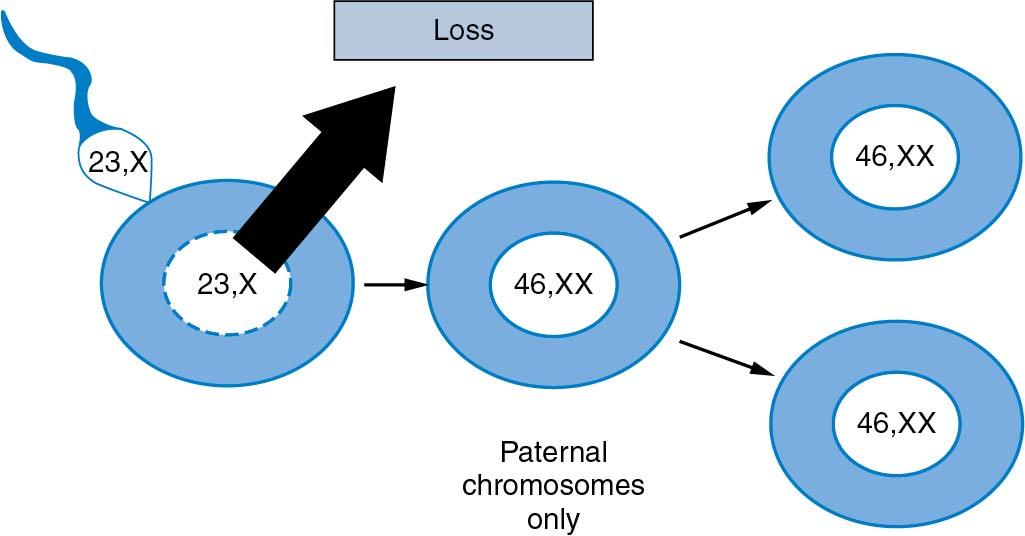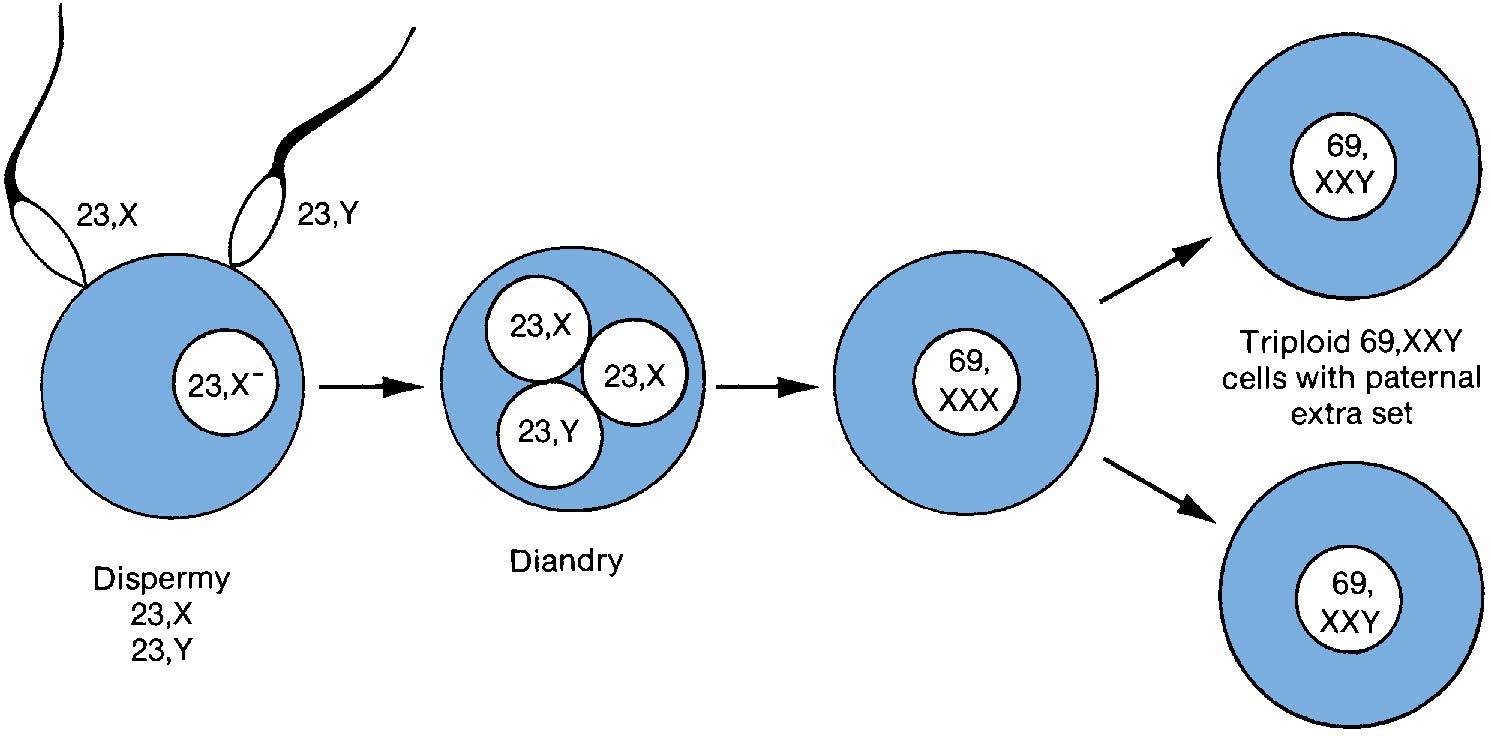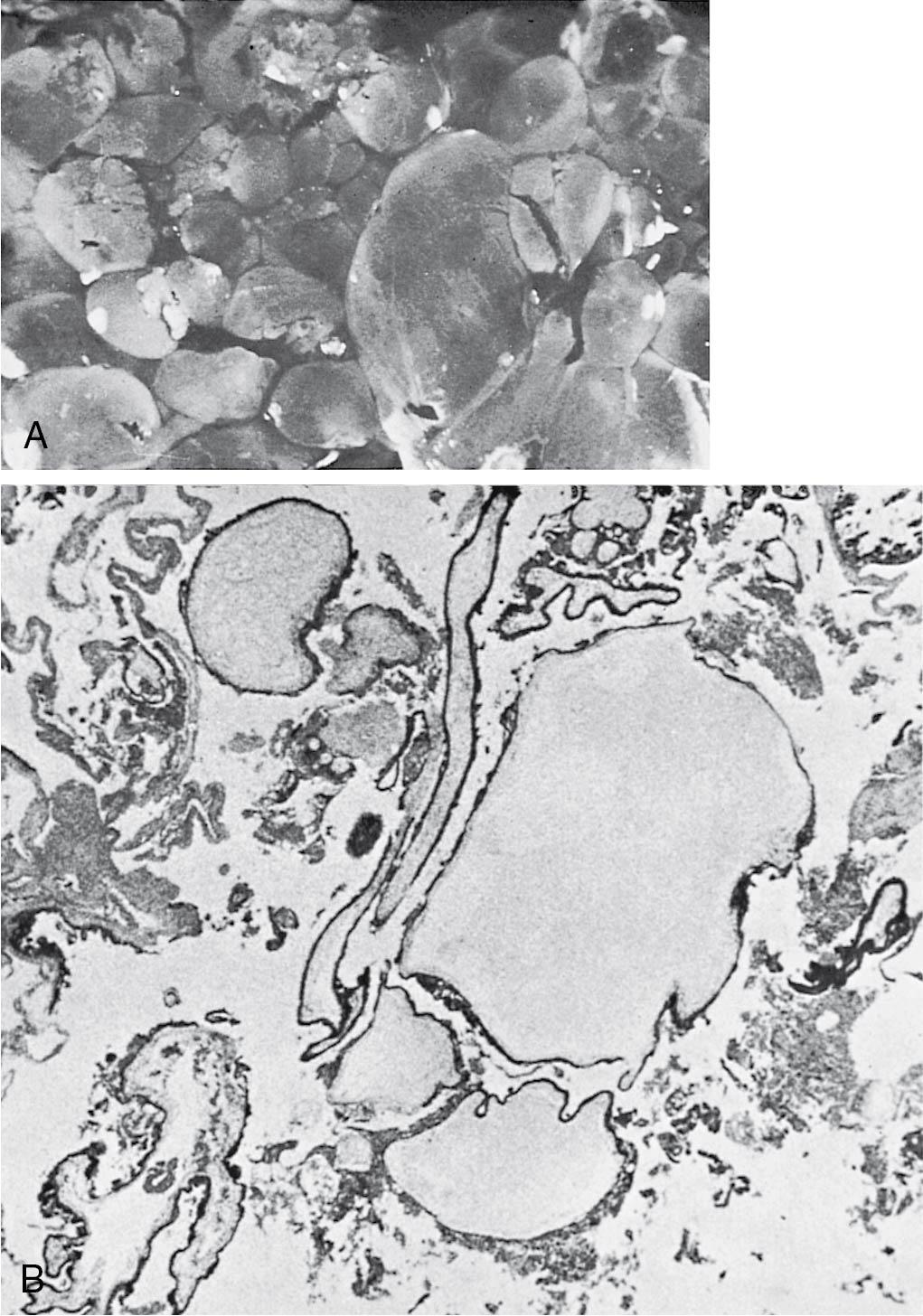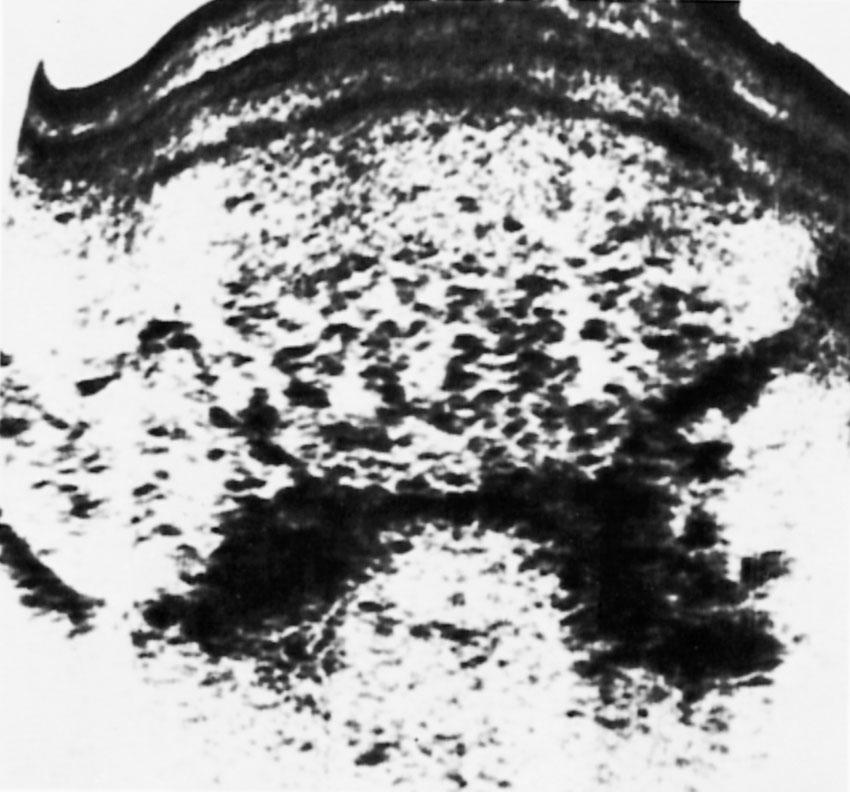Physical Address
304 North Cardinal St.
Dorchester Center, MA 02124
Persistent abnormal bleeding after normal pregnancy, abortion, or ectopic pregnancy should lead to a consideration of the diagnosis of gestational trophoblastic disease (GTD). Pulmonary nodules present on chest radiographs after a normal pregnancy suggest GTD. Beta human chorionic gonadotropin ( β -HCG) levels is elevated in these situations.
Investigation of a young woman with metastatic disease of unknown primary should include a β -HCG level measurement.
The risk of GTN after complete hydatidiform mole (HM) is 15% to 20% and is 1% to 5% after partial HM.
Approximately 50% of cases of GTN occur after molar pregnancy, 25% occur after normal pregnancy, and 25% occur after abortion or ectopic pregnancy.
The major risk factors for molar pregnancy include maternal age (older than 45 and younger than 15 years) and a history of prior HM.
The risk of HM is approximately 1 in 1000 pregnancies in North America.
The risk of a subsequent HM after a primary mole is 1 in 100.
Complete moles are of paternal origin, are diploid, and carry a 15% to 20% risk of GTD sequelae.
Partial moles are of maternal and paternal origin, are triploid, and are rarely (2% to 4%) followed by GTD. They nonetheless require follow-up for potential malignant sequelae, as done for a complete mole.
The monitoring of trophoblastic disease and its follow-up is accomplished by measurement of the β -HCG level.
The diagnosis of a molar pregnancy can be established with ultrasonography and may coexist with a normal pregnancy.
Hydatidiform moles are effectively and safely evacuated from the uterus using suction dilation and curettage.
Medical complications of HM are rare but may include anemia, gestational hypertension before 20 weeks, hyperthyroidism, hyperemesis gravidarum, cardiac failure, and, rarely, pulmonary insufficiency.
Patients are classified into low- or high-risk categories. Low-risk patients are treated with single-agent methotrexate or actinomycin D; high-risk patients receive combination chemotherapy, usually with EMA/CO (etoposide, methotrexate, actinomycin D, cyclophosphamide, vincristine [Oncovin]).
The cure rate for low-risk patients approaches 100%.
Patients with high-risk metastatic GTN are successfully treated with chemotherapy in up to 80% of cases.
Surgery plays an important role in the treatment of placental site trophoblastic tumor (PSTT) and epithelioid trophoblastic tumor (ETT).
PSTT and ETT are both relatively chemoresistant.
Patients treated for GTD should not become pregnant for approximately 6 months after treatment to allow accurate follow-up of β -HCG levels.
Fertility rates and pregnancy outcomes are similar in patients treated for GTD compared with those in the general population.
Patients treated with the EMA/CO regimen have an increased rate of secondary malignancies, particularly hematologic malignancies.
Gestational trophoblastic disease (GTD) is considered one of the most curable gynecologic malignancies. Early disease recognition, effective chemotherapy regimens, and sensitive beta human chorionic gonadotropin ( β -HCG) assays have contributed to the excellent oncologic outcome of these patients. Understanding the disease process cannot be overstated to the general gynecologist, who is usually responsible for the initial diagnosis and management of GTD, as well as the timely referral to gynecologic oncology for further management of gestational trophoblastic neoplasia (GTN). A structured approach to diagnosis and management will result in cure for most patients, even in the setting of advanced disease, without adversely affecting future fertility.
GTD describes a heterogeneous spectrum of diseases of abnormal trophoblastic proliferation ranging from benign to premalignant and malignant, with varying predilections toward local invasion and distant metastasis. Benign trophoblastic lesions include placental site nodule and exaggerated placental reaction. Hydatidiform moles, which include complete hydatidiform mole (CHM) and partial hydatidiform mole (PHM) , are considered premalignant conditions given their potential for invasion. An intermediate lesion arising from chorionic-type intermediate trophoblast, termed atypical placental site nodule (APN), has been described ( ; ), but it is not yet part of the World Health Organization (WHO) classification. APN have been associated with a diagnosis of placental site trophoblastic tumor (PSTT) or epithelioid trophoblastic tumor (ETT) 14% of the time, either concurrently or within months of diagnosis ( ). Gestational trophoblastic neoplasia (GTN) includes four subtypes: invasive mole, choriocarcinoma, PSTT, and ETT ( Box 34.1 ).
In 2000, the International Federation of Gynecology and Obstetrics (FIGO) released a new staging for GTD incorporating the modified WHO Prognostic Scoring System, which has standardized the method for reporting the disease ( ). GTD is classified according to histopathologic, cytogenetic, and clinical features, using the WHO classification of GTD. GTN is diagnosed based on clinical, laboratory, and histologic criteria, and those tumors have a tendency to invade and metastasize.
The incidence of GTD is as common as 1 in 1000 pregnancies, but there are marked regional variations worldwide ( ; ). The precise estimate of the incidence of GTD is difficult to establish as a result of a number of factors, such as low prevalence of the disease, inconsistencies between hospital- and population-based data, and disparity in access to centralized pathology review ( ). Prior estimates based on hospital data overestimated the incidence because deliveries (as opposed to pregnancies) were used in the denominator. Nonetheless, with the introduction of census data, true denominators have added validity to reported incidence rates. Similarly, improvements in central reporting through tumor registries have increased the certainty of case ascertainment. Other factors leading to the improved accuracy of incidence estimations include standardized definitions of GTD variants, improvements in cytogenetics, and recognition of rare variants, such as PSTT and ETT.
The incidence of PHM in the United Kingdom, where all GTD cases are registered in a national database, is 3 in 1000 pregnancies, and that of CHM ranges from 1 to 3 in 1000 pregnancies ( ). A similar rate (2.2 in 1000 pregnancies) was reported in a population-based study from Nova Scotia, Canada. Population-based studies suggest that the incidence of HM is higher in Asia than in North America or Europe ( ; ); however, the incidence of hydatidiform mole (HM) in Asian countries has been decreasing in recent decades, perhaps because of a combination of improved diet, decreased birth rates, and improved measurement of population incidence ( ; ). In a North American cohort, race and ethnicity were strongly associated with the risk of both CHM and PHM. After adjusting for age, Asian women were twice as likely to develop a CHM compared with white women, whereas black and Hispanic women had the lowest risk of CHM ( ).
The increased incidence of GTD in certain ethnic groups has not been explained by looking at genetic traits, cultural factors, or difference in reporting. More recent evidence suggests that women from lower socioeconomic status from various geographic and cultural backgrounds (East Asia, Middle East, North and South America) have an increased risk of HM compared with women from higher socioeconomic statuses in the same regions ( ; ).
Pregnancy occurring at extremes of maternal age (younger than 15 and older than 45 years) is a well-established risk factor for HM, with incidence rates following a J-shaped distribution curve ( ; ). Risk increases after age 35, and a 5- to 10-fold increase is seen in women conceiving after age 40, rising precipitously thereafter. This increase is accounted for by abnormal gametogenesis or abnormal fertilization with advanced maternal age; however, due to the decreased fecundity in this cohort, the overall effect on incidence rates is low.
A reproductive history including HM is another risk factor, increasing the risk in future pregnancies by 5- to 40-fold that of the general population. Subsequent pregnancies have an approximate 1% to 1.7% risk, increasing to 11% to 25% when the number of previous HM is two or more ( ; ). The risk is not affected by changing partners. Patients with recurrent molar pregnancies are also at increased risk for the malignant sequelae of GTN. A history of infertility and of two or more miscarriages is associated with a modest increased risk of both CMH and PHM of 1.9 to 3.2 times the population baseline risk ( ; ).
Dietary risk factor analyses have shown conflicting results. Several case-control studies have shown an increased risk of CHM with decreasing consumption of animal fat and beta-carotene (precursor to vitamin A) ( ). Vitamin A deficiency is more prevalent in countries where the incidence of GTD is higher. Dietary factors may somewhat explain geographic variations in the incidence of CHM; however, other studies detailing food intake have failed to show a decreased incidence with increasing consumption of dietary protein or fat. To date, no association between diet and partial mole has been reported.
Recurrent HM, defined as the occurrence of two or more HMs in the same patient, may be sporadic or familial. A rare autosomal recessive disorder known as familial recurrent HM has been identified on chromosome 19q 13.3-13.4 ( ; ); it affects 1.5% to 9% of women with a previous HM ( ). Affected women have a mutation of the NLRP7 gene and, more rarely, the KHDC3L gene, and they are predisposed to abnormal pregnancies characterized by CHM. Approximately 60% of cases of recurrent HM occur in women who have a mutation in both alleles of the same gene ( ). HMs in women with biallelic mutations are all genetically normal, with chromosomes from each parent (diploid biparental CHM); HMs in women without mutations are heterogeneous, with only a small percentage constituted by diploid biparental CHM and the majority being PHMs and the more common, diploid androgenic CHM type ( ). The mechanism of recurrent HM is through disruption of normal genomic imprinting, with silencing of maternal imprinted genes and preferential expression of paternal imprinted genes ( ). These patients are unlikely going to achieve a normal pregnancy, and egg donation with in vitro fertilization is often necessary.
During early embryonic differentiation, trophoblasts are derived from the outer blastocyst layer, with three distinct trophoblasts recognized: cytotrophoblasts, syncytiotrophoblasts, and intermediate trophoblasts. Cytotrophoblasts are the trophoblastic stem cells that differentiate along a villous and extravillous pathway. The villous trophoblast forms the interface between maternal and fetal tissues (chorionic villi) and is composed of cytotrophoblasts and syncytiotrophoblasts. This layer is responsible for molecular exchange across compartments and, in the case of syncytiotrophoblasts, production of the pregnancy-associated hormones β -HCG and human placental lactogen (HPL). Along the extravillous pathway, they differentiate into intermediate trophoblasts in the placental bed at the implantation site. This layer is responsible for establishing the maternal-fetal circulation and infiltrating the decidua, myometrium, and spiral arteries.
In HM, chromosomal abnormalities differentiate the disease, with complete and partial moles having distinct chromosomal profiles ( Figs. 34.1 and 34.2 ). CHMs are completely derived from paternal origin, with greater than 90% having a 46,XX genotype, produced by fertilization of an empty (anuclear) ovum by a single haploid (23,X) sperm, which then duplicates in the ovum. A small percentage of CHMs have a 46,XY or 46,XX genotype, produced by dispermy, in which a 23,X sperm and a 23,Y or 23,X sperm fertilize an empty ovum. Rarely, complete moles may be triploid or aneuploid. The mechanism for production of the empty ovum is unknown.


In contrast, PHMs are derived from paternal and maternal chromosomes, resulting in a triploid genotype. A haploid ovum is fertilized by two haploid spermatozoa, resulting in a triploid gestation 69,XXX, 69,XXY or 69,XYY. Although a triploid karyotype is usually seen in PHM, not all triploid pregnancies show histologic changes consistent with a partial mole. In addition, PHM may present in conjunction with a viable fetus, showing signs of triploidy such as multiple congenital anomalies or severe growth retardation. Conditions that may be confused pathologically with PHM include Beckwith-Wiedemann syndrome, placental angiomatous malformation, twin gestation with complete mole and an existing fetus, early complete mole, and hydropic complete mole.
The histopathologic differences between CHM and PHM are well defined. The gross appearance of CHM may be impressive, with a large volume of grapelike vesicles made up of edematous enlarged villi ( Fig. 34.3 ). Histopathologic characteristics include the following: (1) lack of fetal or embryonic tissues, (2) hydropic (edematous) villi, (3) diffuse trophoblastic hyperplasia, (4) marked atypia of trophoblasts at the implantation site, and (5) absence of trophoblastic stromal inclusions. In comparison, the gross appearance of PHM may only show subtle abnormalities, with generally a smaller volume of hydropic villi and the possible presence of a fetus or fetal tissue. The histopathologic features are the following: (1) presence of fetal or embryonic tissues; (2) less diffuse, focal hydropic swelling of villi; (3) focal trophoblastic hyperplasia; (4) less pronounced trophoblastic atypia at the molar implantation site; and (5) presence of trophoblastic scalloping and stromal inclusions.

Differentiation between CHM and PHM in early first-trimester abortions can be difficult because of less pronounced trophoblastic proliferation and only subtle hydropic swelling of the villi. Absence of the immunohistochemical nuclear stain p57 gene product of CDKN1C (a paternally imprinted, maternally expressed gene) suggests paternal origin and can be used to differentiate between CHM from PHM or nonmolar pregnancies. Further studies such as flow cytometry, ploidy analysis by in situ hybridization, or molecular genotyping have been described to differentiate PHM (triploid) from CHM and nonmolar hydropic abortions. A summary of the genetic and histopathologic differences between CHM and PHM is presented in Table 34.1 .
| Feature | Complete Moles | Partial Moles |
|---|---|---|
| Fetal or embryonic tissue | Absent | Present |
| Hydatidiform swelling of chronic villi | Diffuse | Focal |
| Trophoblastic hyperplasia | Diffuse | Focal |
| Trophoblastic stromal inclusions | Absent | Present |
| Genetic parentage | Paternal | Bipaternal |
| Karyotype | 46,XX; 46,XY | 69,XXX, 69,XXY; 69,XYY |
| Persistent human chorionic gonadotropin | 15%-20% of cases | 1%-5% of cases |
Dramatic presentations of advanced HMs have become less common in the developed world, largely because of the increased use of ultrasonography and improvements in the sensitivity of β -HCG assays, both leading to earlier detection. The average gestational age of diagnosis of CHM today is 9.6 weeks versus 17 weeks in the 1960s. After a delayed menses, CHM typically presents in the first trimester as vaginal bleeding, with or without the passage of molar vesicles. Other classic signs of CHM include a large-for-date uterus, absence of fetal movement, anemia secondary to occult hemorrhage, gestational hypertension before 20 weeks’ gestation, presence of theca lutein cysts, hyperemesis, hyperthyroidism, and respiratory distress from trophoblastic emboli to the lungs.
When uterine enlargement is more than 14 to 16 weeks, 25% of patients will have medical complications related to the high levels of β -HCG commonly seen in CHM and proportional to the volume of trophoblastic hyperplasia. β -HCG is homologous to thyrotropin-releasing hormone, and the β -HCG isoforms seen in CHM may have a greater affinity for the thyrotropin-stimulating hormone receptor than normal β -HCG, causing excessive thyroid stimulation in some patients. Similarly, β -HCG is homologous to luteinizing hormone (LH), the purported mechanism whereby ovarian stimulation leads to the formation of theca lutein cysts in some patients.
Despite the possible medical complications associated with the disease, data from the New England Trophoblastic Disease Center have revealed the changing clinical presentation over time of HM ( Table 34.2 ). This change in clinical presentation of HM was also demonstrated in China and Thailand, suggesting a worldwide phenomenon. Patients are now more likely to present with minimal symptoms; nonetheless, if medical complications are present, the woman should be stabilized, followed by evacuation of the HM as soon as possible.
| Symptom or Sign | 1988-1993 (N = 74) |
1965-1975 (N = 306) |
|---|---|---|
| Vaginal bleeding | 84 | 97 |
| Size greater than dates | 28 | 51 |
| Anemia | 5 | 54 |
| Preeclampsia | 1.3 | 27 |
| Hyperemesis | 8 | 26 |
| Hyperthyroidism | 0 | 7 |
| Respiratory distress | 0 | 2 |
| Asymptomatic | 9 | 0 |
PHM usually presents incidentally after histopathologic examination of the products of conception from uterine evacuation of a suspected missed or therapeutic abortion. Medical complications such as gestational hypertension, hyperthyroidism, theca lutein cysts, and respiratory distress are rare with PHM. With a low clinical suspicion for PHM, missed diagnosis is a risk, reflecting the importance of a thorough histopathologic examination of curettage specimens to ensure quality care. It is recommended to measure serum or urine HCG level 4 to 6 weeks after uterine evacuation of a suspected missed or therapeutic abortion if symptoms of pregnancy persist (persistent vaginal bleeding or amenorrhea).
The various symptoms associated with HM, such as vaginal bleeding or a large-for-date uterus, often prompt an ultrasound (US) examination to determine whether a pregnancy is viable. US is the standard imaging modality for the diagnosis of a mole, although CHMs are easier to diagnose by US than PHMs, which are difficult to differentiate from incomplete or missed abortion. A CHM has the appearance on US of multiple hypoechoic foci accompanying an enlarged uterus, the so-called snowstorm appearance ( Fig. 34.4 ). As the molar pregnancy progresses into the second trimester, the anechoic spaces of the molar vesicles become more evident. A transvaginal US may show the interface between molar tissue, endometrium, and dilated vesicles in the first trimester better, but it can worsen vaginal bleeding in the setting of metastatic disease to the vagina. Features suggestive of CHM on US are (1) absence of fetal or embryonic tissue, (2) absence of amniotic fluid, (3) enlarged placenta with multiple cysts, and (4) ovarian theca lutein cysts. Features suggestive of PHM on US are (1) presence of fetal or embryonic tissue, (2) presence of amniotic fluid, (3) abnormal placenta with multiple cysts or increased echogenicity of chorionic villi, (4) increased transverse diameter of gestational sac, and (5) absence of theca lutein cysts ( ).

Although US may be the imaging modality of choice, Fowler and associates reviewed 859 cases of histologically proven HM and have shown that only 44% of cases had a preevacuation US suggesting HM, reinforcing the importance of histologic examination for diagnosis ( ). The accuracy was higher for CHM (79%) than for PHM (29%).
The anterior pituitary produces a series of glycoproteins that differ only in their beta subunits, including HCG, follicle-stimulating hormone (FSH), LH, and thyroid-stimulating hormone (TSH). Outside of pregnancy, an elevated β -HCG level signifies the following: (1) GTN, (2) nongestational tumors secreting HCG, (3) false positives, and (4) pituitary HCG (secondary to LH elevation and cross-reactivity of assays) ( ).
An unexpectedly elevated β -HCG level during pregnancy may suggest the diagnosis of CHM. β -HCG typically plateaus in pregnancy at approximately 10 weeks’ gestation, with levels peaking at 100,000 IU/L and then falling thereafter. Genest and coworkers found that 46% of patients with CHM managed over a 10-year period had pretreatment β -HCG levels higher than 100,000 IU/L ( ). Conversely, Berkowitz and colleagues reported in one series that PHM presented with an elevated β -HCG greater than 100,000 IU/L in 2 of 30 cases (6%) ( ).
Become a Clinical Tree membership for Full access and enjoy Unlimited articles
If you are a member. Log in here